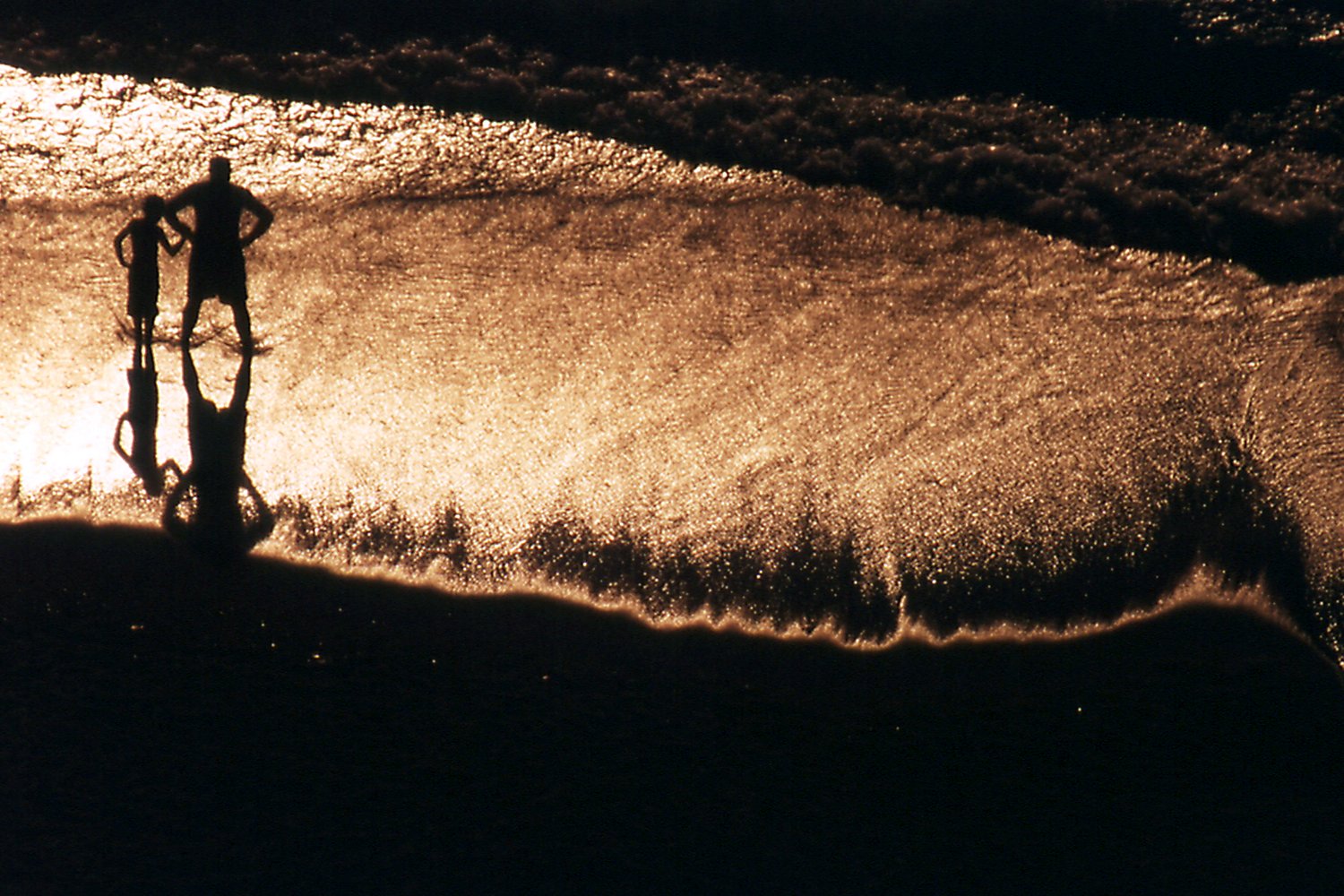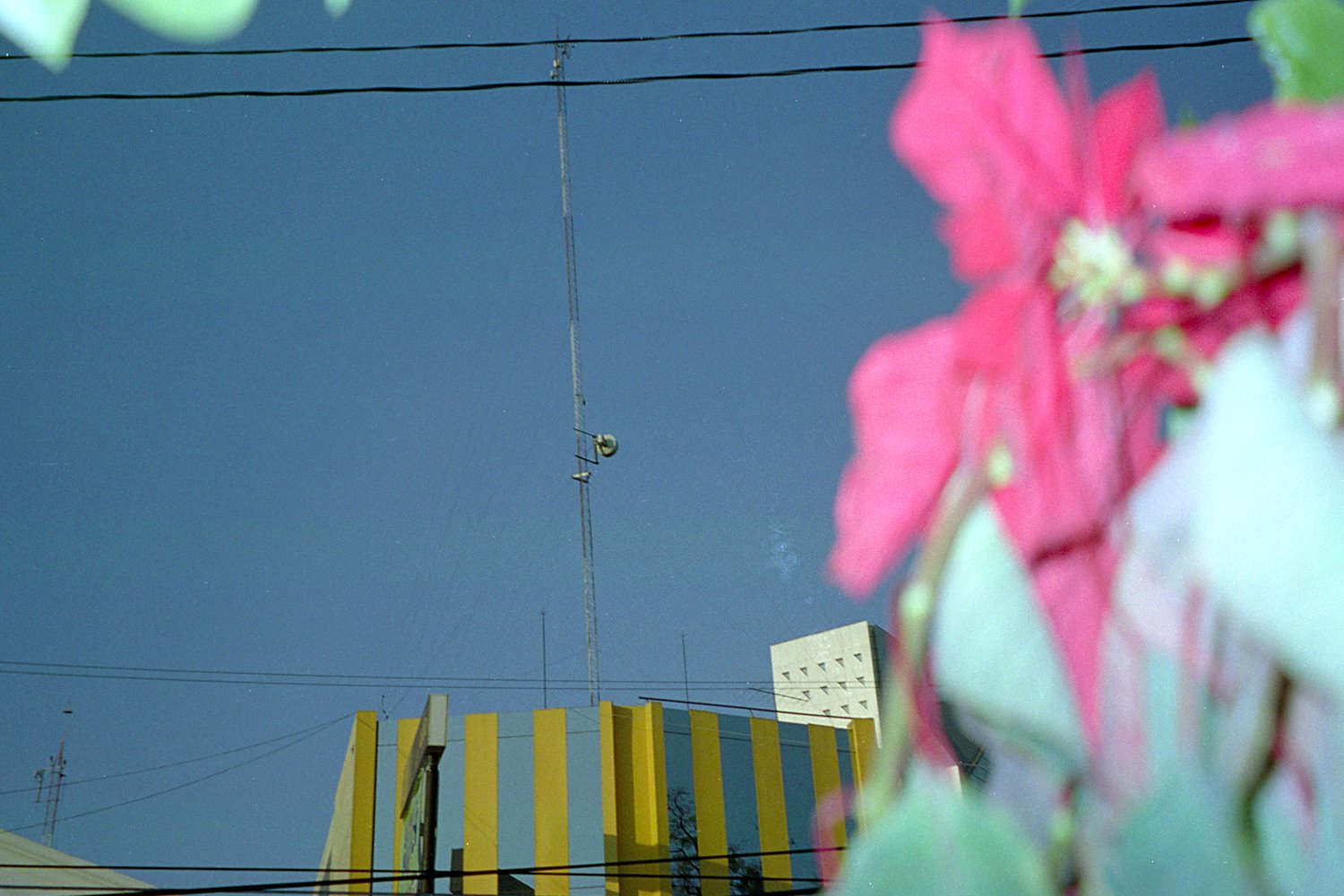Root Race
Studying the work of other photographers, much is revealed throughout their unrealized projects and unsophisticated experiments. The first attempts of my photographic curiosity included plenty of accidents and ramblings. I shot polaroids, 35mm, medium format, pinhole cameras and learned to print from black and white film, do emulsion transfers, cyanotypes and cross process. At first, I favored disciplined composition, correct exposure and methodical processes. But when impatience haunted, experimentation led to over exposure, solarizing, glares, altering cameras, mixing processing chemicals, light leaks and choosing spontaneity over elaborate framing. Shyness confined me to shooting from a distance, even though what most attracted me were the overt displays of strangers engrossed in their private dramas. That required closeups and higher technical skills. To balance timidness, I started photographing the props around people, developing an interest in the metaphysical relationships between them and their surroundings. In negotiating my own family dynamics I started photographing the chaos in my mother’s apartment, her labyrinthian collection of mementos. Diluting shyness allowed for more photographs of tourists fumbling about, informal laborers performing nonsensical daily rituals and families displaying more ridiculous dynamics. I suppose I found catharsis in not walking away from myself and facing all that interested me, including what I feared and couldn’t understand. I never shot at night, flash skills remained perplexing.
“I laid my heart open to the benign indifference of the universe.”
The Theosophical Society was founded in 1875 by Helena Petrovna Blavatsky, Henry Steel Olcott, and William Quan Judge. They promoted universal brotherhood, the study of comparative religion, human potential and other esoteric explorations. A young Jiddu Krishnamurti was discovered by members of the Theosophical Society in 1909. Charles Webster Leadbeater, a prominent Theosophist, believed that Krishnamurti had the potential of becoming a “World Teacher” due to his “extraordinary aura”. Annie Besant, the Theosophist president at the time, believed that Krishnamurti was the prophesied Maitreya. To formally prepare Krishnamurti, the theosophists established the Order of the Star in the East (OSE). The futility of grandiose anticipation and planing was manifest overtime as Krishnamurti began to question the teachings and structures imposed by the Theosophical Society. His own illumination led him to believe that truth cannot be organized or confined within a religious or sectarian framework. In 1929, Krishnamurti dissolved the Order of the Star, famously stating, “Truth is a pathless land”. He declared that no organization, including the Theosophical Society, could lead individuals to truth, emphasizing personal insight and the direct experience of reality.






Helena Petrovna Blavatsky, in her esoteric and theosophical writings, particularly in The Secret Doctrine (1888), detailed a cosmology involving a series of "Root Races" that represent stages in the evolution of humanity. According to Blavatsky, these Root Races were physical, spiritual and metaphysical in nature. They evolved over vast cycles of time and correspond to various continents and ages in Earth's history.
1. First Root Race: The Polarian Race was an ethereal, androgynous and asexual form of early beings. They did not inhabit a physical continent but existed in a subtle state of matter.
2. Second Root Race: The Hyperborean Race lived in a land located in the Arctic region. This race was still not fully physical and lived in a land of perpetual light.
3. Third Root Race: The Lemurians were giant beings with several arms and cyclopean features; they were initially asexual and reproduced through budding or fission. This race was considered the first to have physical bodies and sexual reproduction. Lemurians were spiritually advanced but gradually declined due to moral and intellectual degradation.
4. Fourth Root Race: The Atlanteans inhabited Atlantis, which Blavatsky described as a powerful and advanced civilization that rose after Lemuria sank. This race developed powerful psychic abilities and advanced technologies. Their hubris also led them to destruction.
5. Fifth Root Race: The Aryan Race is the current root race. Blavatsky did not use the term "Aryan" in the same sense that it was later appropriated by racial ideologies.
6. Sixth Root Race: This race is prophesied to emerge in the future. Blavatsky envisioned that this race would bring about greater unity and higher consciousness.
7. Seventh Root Race: The final race will complete the cycle of human evolution, embodying the highest level of spiritual wisdom.
“Life has no meaning the moment you lose the illusion of being eternal.”
On his last public speech, Krishnamurti sat on a raised platform by a tree, surrounded by listeners and occasional gusts of wind. He was in Madras, India, a month before his death at 90 years of age. After his careful walk to the platform, he welcomed everybody with a soft bow in all directions. With shaky hands and cautious yet resolved movements, he climbed the platform and sat in front of a microphone, looked around and asked: “you don’t mind if we start 5 minutes early?” During his hour long speech he frequently closed his eyes for long periods of time, cleared his ears and cheeks of flying dust and combed back the rebel strands of hair on the right side of his head. He was silent when examining the crowd, slow and methodical. He spoke again: “I suppose we must talk”. As the sun was setting during his inquiry on the origin of creation, birds sang and Krishnamurti messed his hair even more, with enthusiasm. He addressed the crowd directly on many occasions. His rhetoric, even while suffering from the last stages of pancreatic cancer, remained energetic, rising above the ever louder chatter of birds. He inquired on the nature of the self should genetic manipulation and computing meet in the near future: “what are you as a human being, what are you… what is becoming of you?” As night settled, he spoke the last words of his speech with firm resolve and with the cadence of a swaying tree: “The origin is nameless, the origin is absolutely quiet. Creation is something that is most holy. And if you have made a mess of your life, change it. Change it today, not tomorrow. Unless all that is prepared, all that is settled, you can’t enter into this world, into the world of creation. It ends.” He bowed and sat in silence, a girl brought him a flower, he cupped it in his hand and took a quick smell. “May we get up and go now?”
An extreme distillation of Géza Róheim’s work suggests that most human enterprises are motivated by experiences of childhood frustration and fulfillment, specifically physical nourishment and the exposure to love and security. He also highlighted that myths, rituals and symbols, as expressions of a collective unconscious, reflect universal psychological drives and anxieties. He saw culture as a management mechanism of impulses. Hunger transforms into dance, the smell of fire into a song, a parental scream into a mountain, a dragon, a sword. Róheim recognized in creative expression an innate human need to extend beyond immediate survival. We tell stories to negotiate with ourselves, to connect with the abyss of the past and to sooth the invisible monsters. Years later and out of the giant sequoia of Carl Jung’s theories on individuation, archetypes, the shadow and spiritual transcendence, Joseph Cambray grew a solid branch. For Cambray, creativity arises from the dynamic interplay between the conscious and unconscious mind, new patterns and solutions emerge. "Creativity is often the interface between the known and the unknown, a bridge that connects conscious awareness to deeper, unconscious insights.”
Many years ago, in a fit of exhaustion and overwhelmed by the amount of unorganized negatives I had accumulated, I chose a few sleeves of slide film and resolved on trashing them. Afraid of becoming a hoarder but conflicted about parting ways with expensive film, I poured bleach in a jar and methodically applied droplets to the celluloid in order to repurpose the film by masking and creating new textures of color. The result was strange and abstract, fascinating. To this day, I can’t remember where I stored those slides. They might be hiding inside a dusty closet in my mother’s apartment waiting for rediscovery. May the dragon of experimentation breath a transformative fire.
“No one to follow. And nothing to teach. Except that the goal. Falls short of the reach.”








